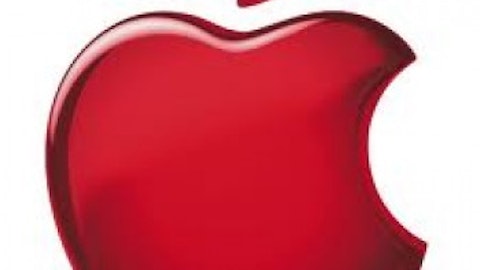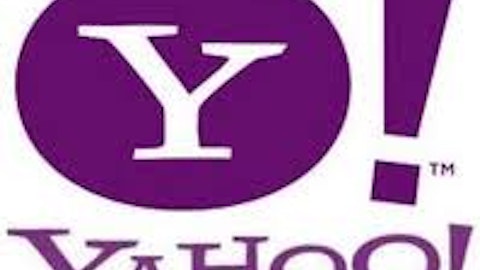Intel Corporation (NASDAQ:INTC), the $101 billion tech giant is amidst a flurry of activity. The company has been buying back its stock, issuing bonds, paying dividends, launching new products and the company’s CEO is going to retire in May 2013. Where is the company heading?
Stock Price
The company’s stock price has been languishing in the range of $20 to $28 for the past three years. And although the company has had a very consistent policy of paying dividends annually (and has been increasing it over the period), the company’s stock price has never been able to cross $35 in the past 10 years. This is despite the fact that the last time the company had a split was way back in 2001. At one point in 2012 the company’s share price had fallen 15% and was around $19 – it’s lowest since August 2011. Even as of today, the company’s stock price is in the range of $20.

The company states on its website that it has an ongoing authorization from its Board of Directors to repurchase up to $45 billion worth of common stock. However, it is intriguing to know that the company had issued bonds worth $6 billion in December 2012. It stated that the company intended “to use the net proceeds from the offering for general corporate purposes and to repurchase shares of its common stock under the company’s existing share repurchase authorization.” Intel Corporation (NASDAQ:INTC) had used the same strategy in September 2011 and issued bonds worth $5 billion. In both cases, the issue of bonds was made when the price was floating at around the $20 level. The company’s stock price had reached around $29 in the intermediate term. Clearly, the company is shrewd in its buyback strategy and understands the company’s valuations better than investors.
New Ventures
Intel Corporation (NASDAQ:INTC) has announced that it plans to enter into the TV–digital entertainment business and is soon going to offer video service over the Internet and a set top box which will use Intel manufactured chips. The company said that it is going to enhance the user interface experience with various features, such as face recognition through high definition video cameras, and users in multiple locations will be able to conduct video conferencing using this device. However, I feel more than the user interface, it’s the quality of the service that is going to help Intel in this venture. Intel is known for the excellent performance of its chips, and thus the performance of this product should be very good.
However, Intel Corporation (NASDAQ:INTC) is definitely going to have to play catch-up in this segment. Firms such as Apple Inc. (NASDAQ:AAPL) and Microsoft Corporation (NASDAQ:MSFT) have already entered this segment and are planning various forays. Apple has its own Apple TV, which automatically synchs with the various Apple devices, while Microsoft already is using its Xbox as a TV connecting devices and is in the final stages of a cloud TV service for Xbox.
Intel has also launched its own customized version of Hadoop, an open source software used in data analysis and used by many firms in data crunching. Again, Intel is not really planning to earn a lot of revenue from the sale of this software. It is trying to capture customers using this offering. There is no doubt that this software will be the most compatible with Intel hardware. It is encouraging companies to buy servers and other hardware that use Intel chips by also giving them a software platform. Again, it is a very smart and cost effective move by Intel. Hadoop, being open sourced is basically available for free, and all you need is a team of software developers to optimize the program. No expensive investment in R&D.
Missed the Mobile Revolution?
There are concerns amongst the analysts and investors that Intel has not really been able to make inroads in the mobile computing market. However, Intel collaborated with Google Inc (NASDAQ:GOOG) to have Android running on the Intel chips (architecture). It has also come out with Atom-branded System-on-a-Chip (SoC) products for smartphones and tablets. On the back of that announcement, Intel also displayed its new low-power, multimode-multiband 4G LTE global modem, the Intel XMM 7160. This product is to be used not only in computers but also in smartphones and tablets. Thus, Intel may not be earning revenues from the mobile space yet, but it is in a very strong position to capitalize on its brand and with the right collaborations start earning dollars too.
Strong Fundamentals
The company has total cash of $18 billion; its revenues are $53 billion; its net income is $11 billion, and the company has an operating margin of 27% (higher than its competitors and the industry.) The company’s beta is 1.1. Despite the company coming out with a second bond offering of more than $5 billion in just over a year, its bonds are rated A1 by Moody’s Investor Service and A+ by Standard & Poor’s. Thus, the company has very strong fundamentals and can afford to take risks in new ventures while consolidating and growing its core business of semiconductors.
Competition?
The biggest advantage Intel has over its competitors is its huge market presence. UK based ARM Holdings plc (ADR) (NASDAQ:ARMH) has collaborated with Microsoft to use its chips in the Windows RT. However, it’s going to take a huge effort on ARM’s part to convince the customers to shun Intel chips in their PCs. Globally, AMD has seen its market shrink because of Intel. As recently as 2009, Intel settled a suit filed by AMD. The suit was an anti-trust litigation by AMD claiming that it was unable to increase its market share because of Intel’s illegal techniques. When your closest competitor resorts to an anti-trust litigation against you, because it is unable to compete with you, it says a lot about your market presence. (Intel had denied any wrongdoing and settled the case out of court).
Investor Perspective
Intel is trying to make inroads in the non-semiconductor industry, while it is also concentrating on strengthening its semi-conductor business. This, coupled with the fact that Intel’s stock price is at its lowest and the company is embarking on a buyback program, makes it seem like a good time to invest in Intel. The company should at least reach its highs of $28, and in case few of its many ventures succeed, the stock may go much higher than it has ever been.
The article Inside Intel originally appeared on Fool.com.
Copyright © 1995 – 2013 The Motley Fool, LLC. All rights reserved. The Motley Fool has a disclosure policy.





